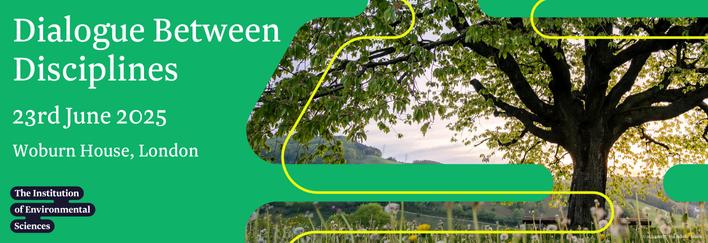 Gary Kass is Visiting Professor in Sustainability Science, Policy and Practice at Imperial College in the Centre for Environmental Policy, and Visiting Professor at the University of Surrey's Institute for Sustainability. He is also a member of Office for the Environmental Protection College of Experts, a member of the Natural England Science Advisory Committee - Social Science Expert Committee. Gary is Vice-President of the Institution of Environmental Sciences and Chair of External Policy Advisory Committee, and a member of the ESRC ACCESS Task Force on Nature Recovery.
Gary Kass is Visiting Professor in Sustainability Science, Policy and Practice at Imperial College in the Centre for Environmental Policy, and Visiting Professor at the University of Surrey's Institute for Sustainability. He is also a member of Office for the Environmental Protection College of Experts, a member of the Natural England Science Advisory Committee - Social Science Expert Committee. Gary is Vice-President of the Institution of Environmental Sciences and Chair of External Policy Advisory Committee, and a member of the ESRC ACCESS Task Force on Nature Recovery.
We rightly celebrate the inventive genius of engineers and scientists, and applaud efforts to bring this genius to bear on critical challenges. We recognise the many significant contributions that they have made across many fields, addressing key concerns, such as tackling disease, increasing food supplies, securing cleaner air and water, improving transport, conserving species, and extending communications to billions across the world.
Innovation, as the successful exploitation of good ideas, thrives where innovators are aware of and ‒ crucially ‒ are responsive to the realities of the world into which they seek to bring their ideas. These realities include both bio-physical aspects such as rising global temperatures or the emergence of pandemic disease, and socio-political realties such as the rise of populist and authoritarian regimes, and the shift in values towards marginalised communities and environmental conditions.
Consequently, bringing together both bio-physical and socio-political realities is essential to help drive the innovations necessary to address the challenges we experience now and can foresee in the future. There is a wealth of approaches and frameworks that can help to create the intellectual and practical spaces in which to convene those engaged in the bio-physical and socio-political aspects of these key challenges. At the core of these approaches is the adoption of one or more methodologies grounded in systemic (or simply systems) thinking. Systems thinking recognises that the real world is characterised by inter-related components that combine in complex ways subject to dynamic feedback loops, adaptive responses, and multiple perspectives. From such situations emerge outcomes that are difficult to predict reliably in advance, and as a result, a single best and universal solution cannot always be agreed upon.
Systems thinking comprises a range of disciplined approaches to ‘seeing the big picture’ and thereby “recognising patterns and interrelationships, appreciating other perspectives, and learning how to structure more effective, efficient and creative systems”.1 Systems thinking approaches are grounded in a range of core theoretical concepts, building on work in a diverse range of fields such as systems engineering, communication complexity science, organisational management, anthropology, ecological dynamics, psychology, social theory and political science.
The natural and social sciences are well represented in the intellectual underpinnings of, and subsequent development and application of, systems thinking. But it would be wrong (and perverse given its foundation in plurality) for any one discipline to claim any particular dominance by (or privileged position in relation to) systems thinking.
Yet, there is little doubt that the natural and social sciences both provide vital groundwork for the core tenets of systems thinking, especially in relation to efforts to address increasingly urgent real-world challenges.
We operate in a culture that focuses its efforts on science, technology, engineering, mathematics and business (referred to as STEM-B). However, there is increasing awareness that there are many areas where the social sciences are essential alongside STEM-B, both directly and indirectly.
In the direct sense, medicine and business are both situated within, and grounded in, the social sciences. For example, how a business functions as an organisation ‒ creating and operating structures and processes, and developing and executing strategies, for example ‒ is predicated on a robust understanding of people’s behaviours, motivations and capabilities both inside and outside the organisation. Similarly, social sciences are key to how health services and clinical practices are targeted, developed, implemented and evaluated, which enhances learning and improvement. And of course the norms, customs, values and practices of individuals, groups and organisations at play in both settings are fundamental aspects of real world contexts. Less directly, scientific enquiry and engineering practice are also driven by human processes and ways of thinking and acting. The questions asked, the methods adopted to address those questions, and the norms of knowledge and standards of evidence are shaped by the worldviews, perspectives, and assumptions of scientists and engineers. For example, when investigating the dynamics of an ecosystem, choices are made regarding where the boundaries of the area of study are drawn, which biotic and abiotic features to study within those boundaries, and how to capture and represent the interactions between these components. And in a real-world setting ‒ say, seeking to conserve an endangered species ‒ it is necessary to understand the value of the species to the ecosystem as a biophysical entity alongside its value to the community, and hence decide what constitutes ”good” in terms of conservation targets.
Tried and tested approaches that enable people to work across the boundaries of disciplines, institutions and sectors2 include systems thinking methodologies and frameworks, such as systems dynamics, soft systems methodology and viable systems modelling.3 These can assist in structuring situations, drawing in and drawing together multiple perspectives, developing appreciation for system interlinkages and setting robust system boundaries. These methodologies can be applied individually and in combination, both in whole and in part, enabling constructive discussions related to each of these settings.
Depending on their context, using systems thinking methodologies at different scales and in different combinations can enhance a group’s appreciation for the nature of a situation, and their understanding of who holds particular interests or exerts influence in a given situation. They can also broaden and deepen the richness of analysis, enabling more relevant, credible and legitimate assessment of issues and options, supporting action from planning to implementation (and back again). Crucially, systems approaches inculcate a self-reflective practice among participants, building capabilities both individually and collectively.
According to Ashby, “too often, today's problems are solved by utilising easy and comfortable approaches to obtain simple solutions. In reality as many discover, simplicity and common-sense approaches are far from effective in dealing with complex, dynamic and diverse problems.”1
Traditional non-systemic perspectives often fail to account for real-world complexities and dynamics, and excluding relevant diverse perspectives. This commonly leads to programmes and interventions that fail, or that deliver inequitable, ineffective and inefficient outcomes.
Ashby makes clear that there is “a growing need to improve and create better results”,1 particularly in the face of increasing urgency and complexity in the world around us. Systems thinking approaches can never guarantee success, but they can help find common ground between STEM-B and the social sciences. This is an increasingly urgent endeavour if we are to work across boundaries to secure just, equitable and sustainable futures both at home and across the world.
Dialogue between Disciplines Conference 2025
Are you looking to integrate systems thinking and interdisciplinary approaches into your work in the environment sector? If so, attending the Dialogue Between Disciplines (DbD) conference on Monday 23rd June 2025 at Woburn House, London, is a great place to start.
DbD is dedicated to fostering collaboration and knowledge-sharing between environmental professionals from across specialisms and sectors. It champions a systems thinking approach, interdisciplinary solutions, and practical action to support the IES’ mission to find sustainable solutions to the triple crisis of climate change, biodiversity loss, and pollution.
Don’t miss the engaging presentations, case study insights, Q&A sessions, and practical workshops.
Book your spot here and take a look at the agenda for more detail.

References
- Ashby (2009) cited in Reynolds, M. and Holwell, S. (2010) Systems Approaches to Managing Change - A Practical Guide. 1st edn. London: Springer, p. 305.
- Kass, G. (2025) Beyond Boundaries: Strengthening boundary crossing through geography. Geo: Geography and Environment, 12 (1), e70013. doi: 10.1002/geo2.70013
- Reynolds, M. & Holwell, S. (2010) Systems Approaches to Managing Change - A Practical Guide. London: Springer.
Header image credit: © Richie Chan | AdobeStock





